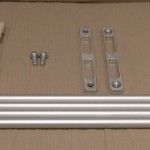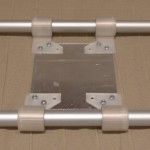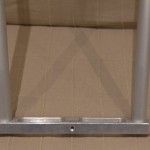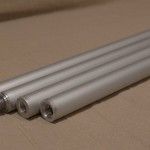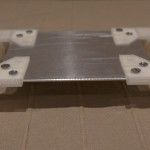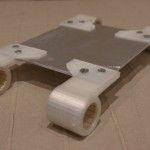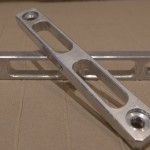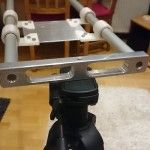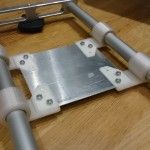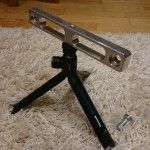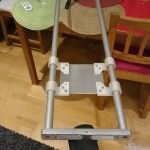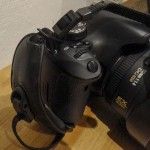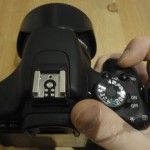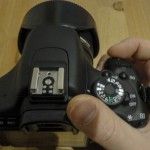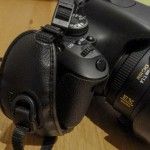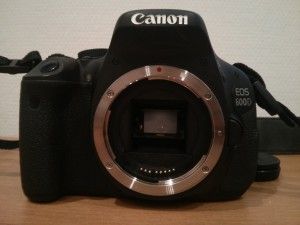
EOS 600D
The first cam i bought for my self was the EOS 600D. This DSLR, also known as Rebel T3i or Kiss X5, was my first choice not because of the technical specs rather than that is was cheap and a Canon. The decision to use Canon was made by the two facts that a lot of friends have Canon, so i could borrow some equipment, and the availability of Magic Lantern, but more about that later. I bought it with the kit lens, EF-S 18-55mm f/3.5-5.6 IS II and nothing more.
Handling
I was surprised by the weight of the cam, it is really light and relatively small. I was using it on the mountain, at some hiking tours and also city trips and the weight was not too much at all. The movable screen is really nice and is a feature that i would miss on cams like the 5D MKiii or the 6D. I mainly used it while making time lapses, but also in every other condition it is just a nice to have. I really miss this feature on my 6D. To avoid the moving of the tripod i didn’t use the full size of the pod and tried to mount the cam near the ground. So the wind would have a smaller effect on moving the cam. But this has the disadvantage that, if u point with the cam to the sky, the LCD is really not readable. With the LCD of the 600D this is no problem at all.
Technical Specs
The Sensor is a CMOS APS-C with 18 mega pixels. The cam can record 1080p, but i never really used video recording. Up to ISO 1600 the pictures can be rated as really good but over ISO 3200 the noise becomes really visible (For further reading – Understanding ISO). This is one of the biggest disadvantages, especially with night photographing or low light situations. I personally try to avoid more ISO than 1600 with this cam. Another disadvantage is that, if u ever want to shot a lot of pictures in a row, you have to switch to JPEG. The 600D is only capable of shooting 6 RAWs in a row or 34 JPEGs. I used this one two times right after i bought the cam, noticed this is not the strength of the cam and never used it again.
Magic Lantern
A nice “feature” for all Canons is Magic Lantern, an open source project for an alternative EOS Firmware. I was searching before i chose a camera especially for time lapse photography and sky photography. After some google sessions and approx. 1 million forum posts I found Magic Lantern. It enables a lot of features on all EOS Cameras which are normally just for the higher price league of Canon. In my case the intervalometer in combination with an automatic exposure adjustment attracted my attention. The “holy grail” of time lapse photography, the transition from day to night and vice versa in all EOS cams… nice! The firmware can do a lot of more things and you will probably need one week to explore all of them. The installation is really simple:
- Check for a full battery and be aware that you are doing this at your own risk! Read the instructions provided with the downloads if you are stuck.
- An SD/SDHC/CF card with 32GB or LESS. You can still use larger cards later.
- Download the OLD version 2.3! LINK
- Extract the old version of ML and copy it to the ROOT folder of your SD. It is a folder named ML and two file: autoexec.bin and, in the case of a 600D, the file 600D-102.fir. There are also other files for other models but you don’t need them.
- Now your camera have to be flashed with the new firmware. (Actually, it’s not a firmware, it just sets a flag that the camera can boot from the SD card.) For this power on the camera with the SD card inside and flash the firmware from the Canon menu.
- Wait for the progress to be done.
- Now your camera has the latest ML Version installed. Move on if you want to use the cutting edge Nightly Builds.
- First go to the magic lantern download page.
- Select the 600D there. Make sure your have the right firmware version! Is there is written 600D.102 then your 600D should have 1.02 firmware. Check that in the Canon menu on the camera.
- Download the file and extract it.
- Copy all contents to your SD card, overwrite the old files!
- Power on the camera.
- Done.
The old firmware has a nice mode for time lapsing sunset and sunrise, the bulb ramping mode. It simply ramps really smoothly the exposure over time and adjusts the brightness. I tryed this several times and was really impressed by this feature. On the downside, LRTimelapse will not work with the holy grail workflow there. The Nightly Build will give you the option to use aETTR to create time lapses that can processed by LRTimelapse.
I think the EOS 600D is one of the best starter cams and in combination with the stock lens it is also very usable in common situations.

